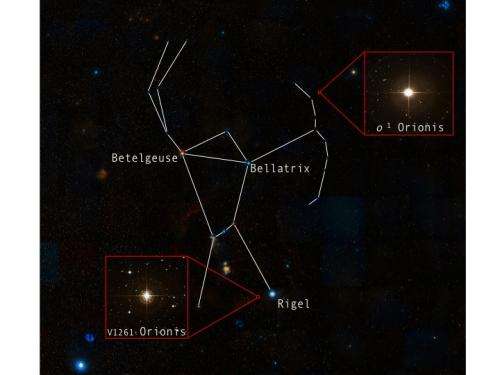Researchers succeed in measuring the temperature at the heart of stars

Researchers from the Université libre de Bruxelles and the Université de Montpellier have succeeded, for the first time, in measuring the temperature at the heart of certain stars, as well as dating them. Their study is published in the January 8 issue of Nature.
In 1926, astrophysicist Sir Arthur Eddington wrote in his work The internal constitution of the stars: "At first sight it would seem that the deep interior of the Sun and stars is less accessible to scientific investigation than any other region of the universe. What appliance can pierce through the outer layers of a star and test the conditions within?"
Nearly 90 years later, this question has now gained an answer, thanks to the work of a team of six astrophysicists from the ULB Faculty of Science's Institute of Astronomy and Astrophysics and the Université de Montpellier's Laboratory of the Universe and Particles who have managed to measure the temperature at the heart of specific stars and to estimate their age.
These measurements use isotopes of well-chosen chemical elements (such as 99Tc and 93Nb), which act as both a thermometer and a clock and which the researchers have found to be in abundant supply on the stars' surfaces. To do this, they have used the HERMES spectrograph (mounted on the KULeuven Mercator telescope located on La Palma in the Canary Islands), built in the context of collaboration whose main partners were the KULeuven, the ULB and the Royal Observatory of Belgium.
The temperatures measured by the astrophysicists are those of the deep layers within the stars where the synthesis of elements heavier than iron takes place. These heavy elements, after having been dredged-up to the star's surface, are ejected into the interstellar medium at the end of the giant star's life. They become part of large dust and gas clouds making up the interstellar medium and giving birth to new stars. This is the scenario under which the Sun came into existence four and a half billion years ago. The heavier-than-iron elements that we use today here on the Earth in a range of technological applications (such as niobium in permanent magnets or cerium in catalytic converters) have followed this same path.
Our understanding of the origin of all these elements has been greatly improved by this study, just published in the 8th January issue of Nature.
More information: "The temperature and chronology of heavy-element synthesis in low-mass stars" Nature, 8 janvier 2015 DOI: 10.1038/nature14050
Journal information: Nature
Provided by Université libre de Bruxelles



















